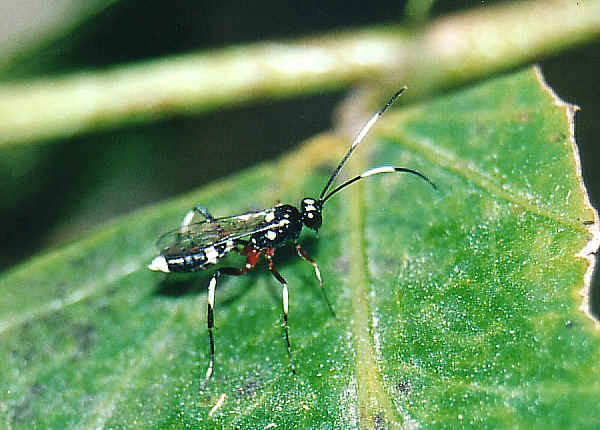
They aggressively defend their nests from threats, and their stings are known to be painful. If their nest is above ground, it is most often inside another object, such as a pipe, tree stump, or a shed. A yellowjacket nest has a tan/brown to red/orange colored protective envelope made of worn, decaying wood. In Northern Virginia, Maryland, and Washington DC they typically nest just below the ground, though they can be found above ground. Their bodies are black or brown with yellow and/or orange. Yellowjackets are social, stinging insects, with colonies numbering potentially in the thousands. Adult paper wasps have a pinched waist and six long, thin legs dangle below their body as they fly. They create upside-down, umbrella-shaped nests from a plant and wood fibers that are mixed with their saliva. Paper wasps have bodies that are brown or black with yellow or orange markings, and their wings are gray. They are solitary pests that are commonly identified by the unique nests they create out of mud and mud-like material. Mud daubers range in color from black to metallic blue and may have yellow or green markings. They have narrow waists and a thread-like segment between their thoraxes and abdomens, giving them the appearance of being stretched. Mud daubers are a large species of wasps. A European hornet colony will contain 200 to 400 adult hornets at the peak of their season (late summer), and they feed on insects, tree sap, fruit, and honeydew. If the nest is not built inside another object, it will have a stiff, paper-like brown covering made of chewed wood. European hornets typically nest in hollow trees, attics, and wall voids, but can be found in other places. They easily exceed three quarters of an inch, getting to be up to an inch and a half. Males are more territorial, but since they lack ovipositors, are incapable of stinging.Įuropean hornets are large, brown hornets with yellow stripes and pale faces. While females are typically not aggressive, because of their straight ovipositor (stinger), they are capable of stinging repeatedly.


The females are larger than the males, and they will sting a cicada before carrying it back to their nest to provide food for their young. Adult cicada killer wasps can be up to two inches long, and are dark colored, often black, with light yellow stripes on their abdomens. Typically found on trees, in bushes, or attached to the side of a house or shed, these nests are enclosed within a protective paper shell, and workers can be seen flying in, out, and around the nest.Ĭicada killer wasps are large, solitary digger wasps that hunt and feed on cicadas. Bald faced hornets are territorial, and defend their aerial nests aggressively. They are black, with a white pattern on most of their faces (bald faced), and get to be a little more than half an inch. Not a true hornet, bald faced hornets are closely related to yellowjackets. The most common species of stinging insects living in Northern Virginia, Maryland, and Washington DC are bald faced hornets, cicada killers, European hornets, mud daubers, paper wasps and yellowjackets. Therefore, wasps are responsible for some pollination. The majority of wasps are predatory, killing and feeding on various species of garden pests, spiders, and other insects. Most species of wasps have pinched waists, two pairs of wings, and six legs that hang down when flying. The remaining members of the nest perish in winter.Wasps are a type of stinging insect. Hibernationįertilized females look for places to hibernate as cold weather approaches. Often mistakenly called bees, yellowjackets are. The males fertilize some of the newly developed females. Notoriously aggressive, the yellowjackets shiny yellow and black striped abdomen is an unmistakable warning. As many as 700 workers may live in the nest. These eggs hatch into larvae, eventually becoming workers that help to further expand the nest.Ī bald faced hornet nest can grow to be as large as a basketball within a number of months. She puts insects and nectar into the cell with the egg. ReproductionĪ colony begins in spring, when a queen lays a single egg inside each cell as she begins to build her nest. DietĪdults consume liquids, usually sugars like juices or nectar, but will bring back solids such as insects or carrion for the larvae to consume.

They usually build aerial nests made of paper in trees or under overhangs. Bald faced hornets are most active during the day.


 0 kommentar(er)
0 kommentar(er)
